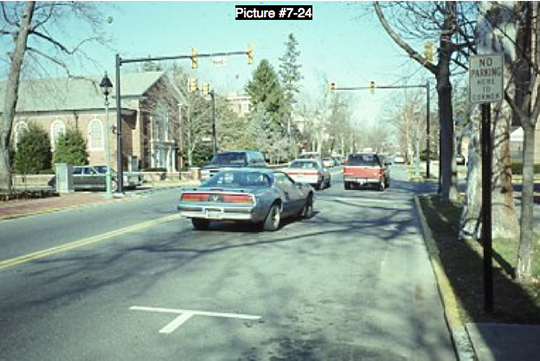Passing and Lane Changing
There is a major difference when comparing two-way roads (Picture #7-22 below) and one-way roads (Picture #7-23 below).
Picture #7-22 is a two-way road (opposite direction traffic arrows) with a broken yellow line separating the traffic lanes. This broken yellow line identifies a legal left passing zone in both directions. IMPORTANT: PASSING left always requires a DOUBLE LANE CHANGE. A LANE CHANGE to return to your original travel lane is paramount for obvious safety reasons.
Picture #7-23 is a one-way road (multiple lanes same direction traffic) with either a solid or broken white line separating same direction traffic. Faster traffic will execute an OVERTAKING maneuver as they proceed beyond the traveling traffic to their front. LANE CHANGING is an option but not a requirement when executing an OVERTAKING maneuver. Additionally, if a LANE CHANGE is executed in order to accomplish an OVERTAKING task the operator of the OVERTAKING vehicle has the option to remain in their current travel lane or LANE CHANGE to another legal travel lane.
SOS — 98% Rule
If you can master the above you are on your way to better odds by implementing the principles of “Smart Defense”. However there is more to improving your odds than just understanding the 98% (arbitrary number) rules of the road. So let us now work on some of the exceptions to the 98% rule.
PASSING exceptions — PASSING RIGHT: Picture #7-24 and #7-25 below identify legal PASSING LEFT TURNING traffic on the RIGHT maneuvers.
A. PASSING LEFT TURNING traffic on the right is legal even in an intersection — Picture #7-24 above. Caution: Executing this PASSING ON THE RIGHT maneuver is not legal if attempted from a RIGHT TURN lane.
B. PASSING LEFT TURNING traffic on the right side is also legal if there is an improved right shoulder — Picture #7-25 below.









